The Quiet Collector’s Manifesto: 10 Principles for Buying Art That Holds You
The art market has no shortage of noise. Open Instagram and you’ll see collectors boasting of their acquisitions, galleries staging carefully photographed openings, and auction houses broadcasting prices like sports scores. But collecting has never really been about volume. At its best, it’s about intimacy. It’s about the art that holds you, not the art that shouts at everyone else.
For many serious buyers, the old model of collecting feels hollow. They don’t need another statement piece. They don’t need the validation of a record sale. They want something quieter: work that sustains them emotionally, intellectually, and spiritually. That’s the foundation of the Vault. It isn’t a public shop window. It’s a private catalogue designed for collectors who understand that resonance is more valuable than recognition.
What follows is a manifesto for this kind of collecting: ten principles to guide those who want to buy art that holds them, not just decorates a wall.
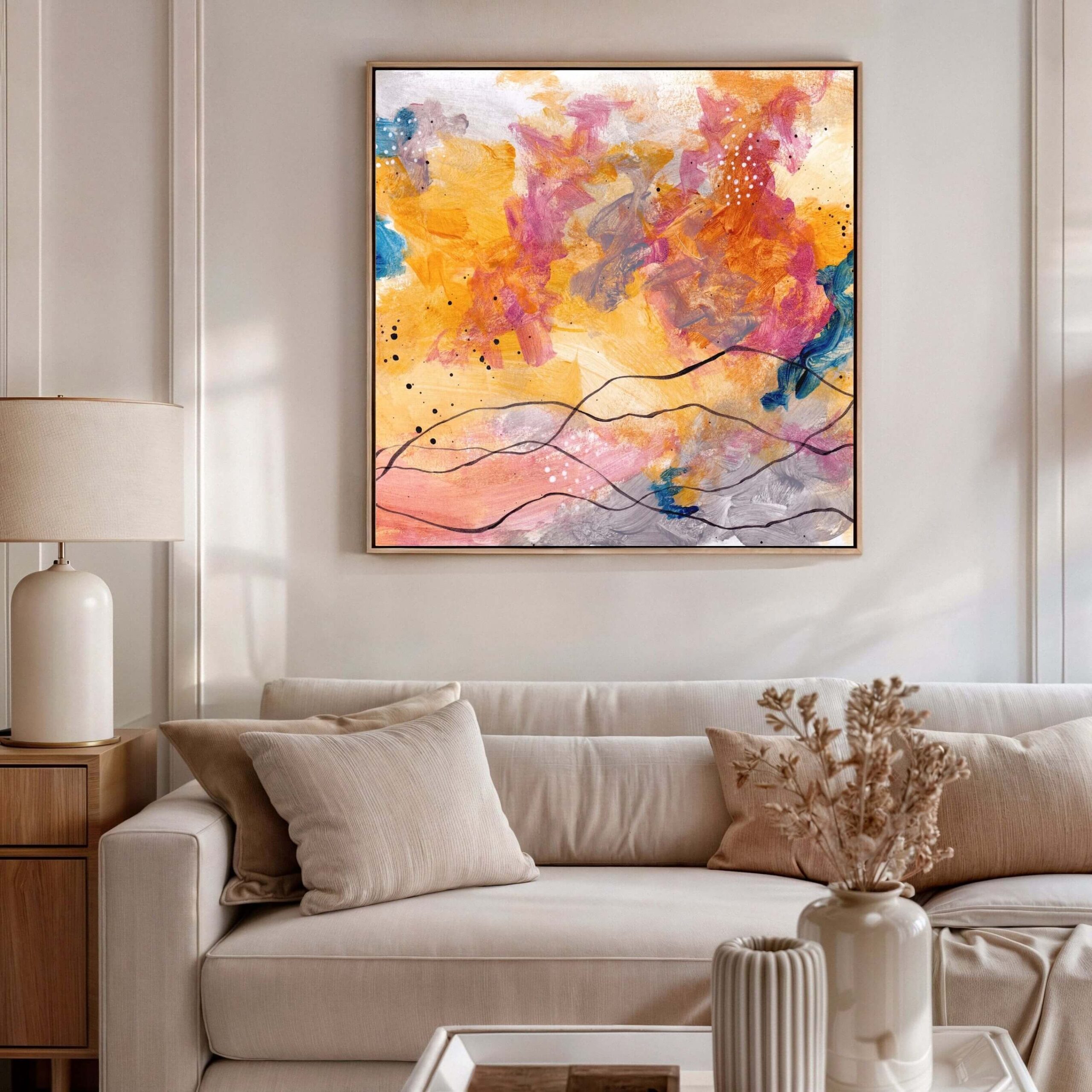
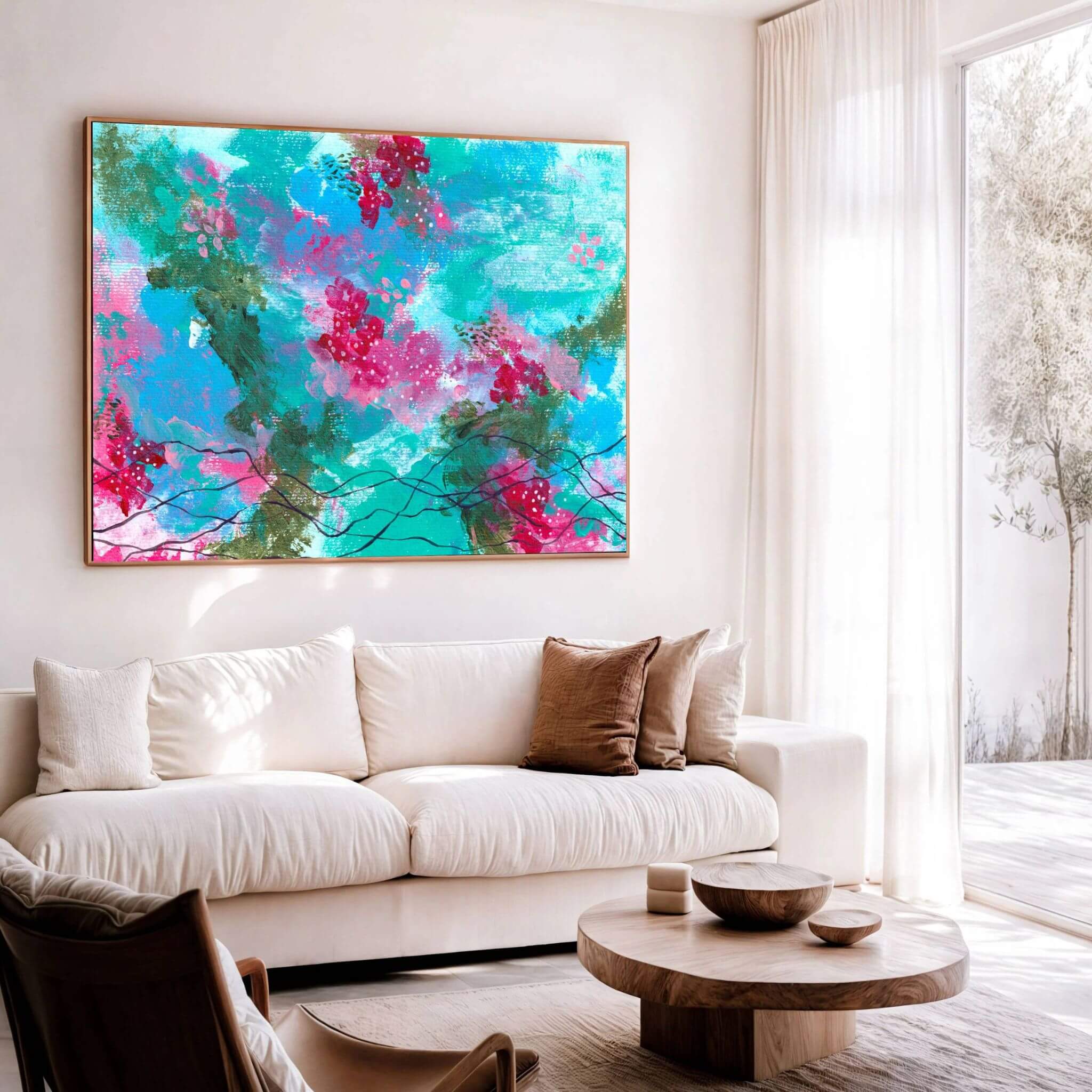
Principle 1: Choose Resonance Over Recognition, Why Trends Age but Presence Doesn’t
Recognition is seductive. The art world thrives on it: who bought what, who sold where, which name is now fetching a higher auction price than last year. Collectors are trained, often unconsciously, to value recognition above all else. If a piece is recognised by critics, by galleries, by Instagram followers — it must be good. If an artist is recognised, then surely you should want them in your collection.
But recognition is fickle. Today’s golden child can be tomorrow’s forgotten name. Entire schools of art have been elevated and discarded within a decade because their recognition was tied to fashion, not depth. Recognition ages badly because it depends on consensus, and consensus changes with each season of hype.
Resonance is different. Resonance is what happens when you stand in front of a piece and your body knows before your mind does. Resonance is that subtle shift in your breathing when a work anchors you, or the way you return to it mentally days later without meaning to. It isn’t about whether the world approves. It’s about whether the work alters your internal world, however slightly.
Quiet collectors understand this distinction. They don’t measure value by how loudly a work is applauded but by how deeply it sits inside them. The Vault is designed for exactly this kind of collecting. It isn’t arranged to impress; it’s curated to resonate. Each work exists because it holds presence, not because it scored points in a marketplace.
To choose resonance over recognition is to resist a whole ecosystem designed to make you feel inadequate. Auctions, fairs, and art market reporting all push the same message: if you don’t own this recognised thing, you are missing out. But art isn’t a stock portfolio. You’re not buying future resale potential. You’re buying anchors for your own life.
And here’s the test: when you remove the recognition, does the work still move you? If the world stopped applauding tomorrow, would you still want it in your home? If you never told another soul you owned it, would it still matter?
Collectors who choose resonance can answer yes to those questions. And because of that, their collections grow richer with time, not poorer. They aren’t caught in the exhausting treadmill of keeping up. They aren’t haunted by the fear of being left behind. Their walls become sanctuaries, not scoreboards.
In practice, this means slowing down your acquisitions. Taking time with a catalogue like the Vault. Sitting with the images, noticing your own reactions. Do you feel calmer? Sharper? Seen? Or do you feel nothing but the obligation to understand why it’s “important”? That pause tells you everything.
Recognition is fleeting. Resonance lasts. One fades as the crowd moves on. The other deepens each time you sit with it. The quiet collector chooses resonance because they know their lives are too complex, too intimate, too precious to be filled with somebody else’s applause.
And that’s the point: resonance doesn’t age. Presence doesn’t go out of style. What holds you today will hold you tomorrow, and a decade from now, if it’s true. Buying art that holds you begins with the courage to ignore the noise and trust the resonance you feel when no one is watching.
Principle 2: Continuity, Not Convenience, The Collector’s Patience
Convenience is the enemy of depth. The art market, much like every other market, has worked hard to make collecting “easier.” You can browse online shops that deliver a stretched canvas to your door in three clicks. You can pick something that matches your sofa, have it arrive tomorrow, and be congratulated for “supporting the arts.” But what you gain in convenience, you lose in continuity.
Convenience produces collections that are shallow. They may fill a wall, but they don’t anchor a life. They don’t carry forward a thread of meaning or establish an ongoing relationship with a body of work. They’re impulse buys, and impulse rarely matures well. You can tell when you walk into a room and the art feels like a checklist, nice, coordinated, perfectly inoffensive, and completely forgettable.
Continuity requires patience. It asks you to collect with a sense of time, not just taste. Instead of asking, “what works today?” you ask, “what will still work for me in ten years?” Continuity means seeing a piece not as an isolated object but as part of a living practice. When you step into the Vault, you’re not choosing from random decorative items. You’re stepping into a continuum — works drawn from a single, evolving practice where each piece is a fragment of a much larger whole.
This is the difference between art as shopping and art as resonance. Convenience says: “I have a blank wall, I’ll fill it.” Continuity says: “This wall matters to me, and I’ll wait until the right piece finds it.” One is about ticking a box; the other is about establishing a relationship that endures.
Quiet collectors understand that patience amplifies value. They don’t rush because they know that haste produces regret. The Vault encourages this rhythm. It isn’t a platform designed for impulse. It’s a private catalogue that requires your time and attention. You’re meant to sit with it, revisit it, let the work breathe with you until the piece that holds you makes itself known.
The irony is that convenience looks efficient but ends up wasteful. Quick buys are often replaced within a few years when they stop resonating. Continuity looks slow, but saves you from this churn. When you collect with continuity, the pieces you bring into your life stay with you. They deepen, they settle, they become part of your daily rhythm.
Patience also changes the collector. It transforms the act of acquisition from shopping into reflection. You become more attuned to what you need emotionally, not just aesthetically. You notice which pieces shift your state of mind and which ones leave you flat. That noticing is part of the continuity, your awareness grows as your collection does.
And that’s the heart of it: collecting for continuity means collecting with intention. You’re not rushing to meet a trend or match a room. You’re allowing your collection to be a thread that runs quietly through your life, binding together years, spaces, and states of being.
Convenience will always tempt you with speed. Continuity will reward you with meaning. The quiet collector knows which one is worth choosing.
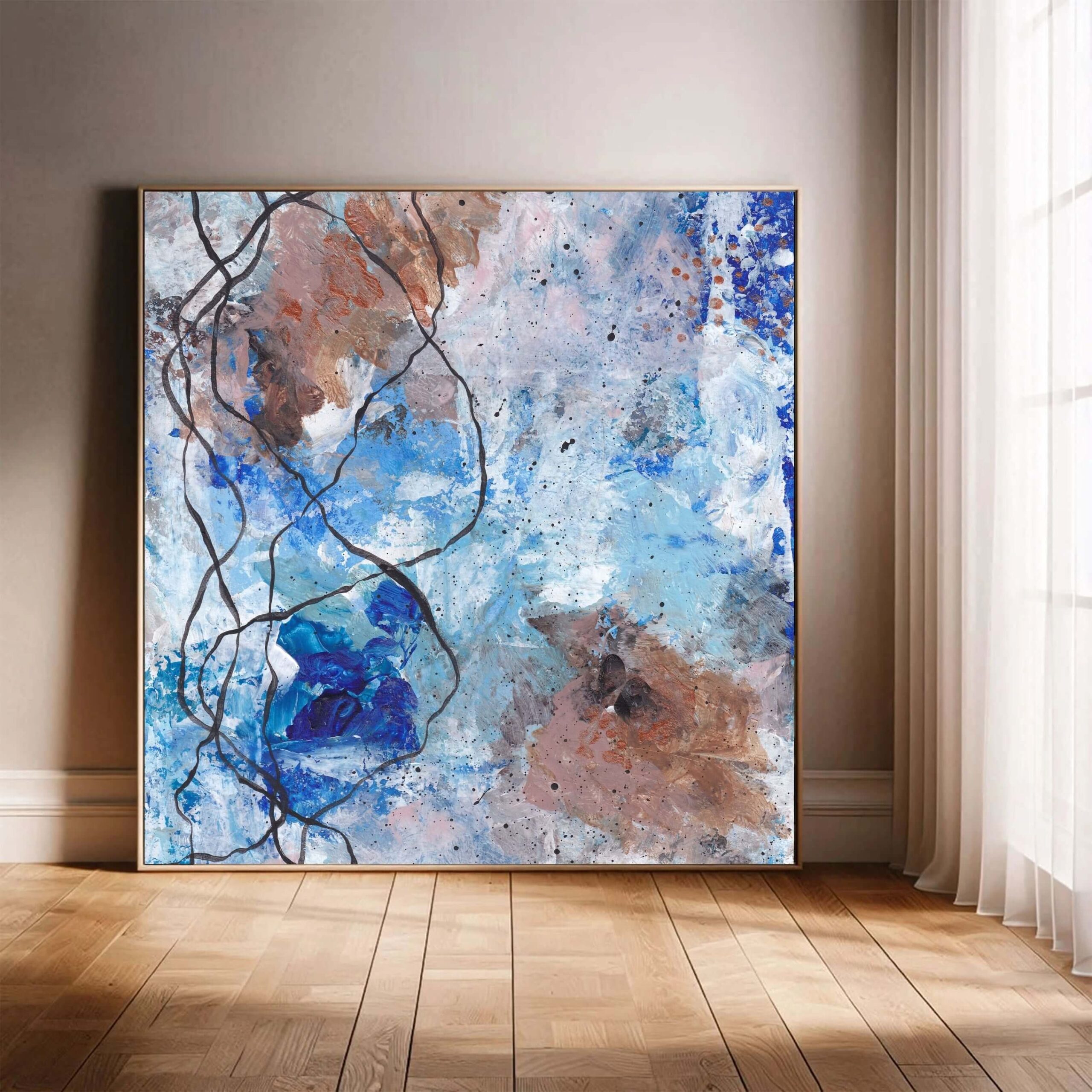
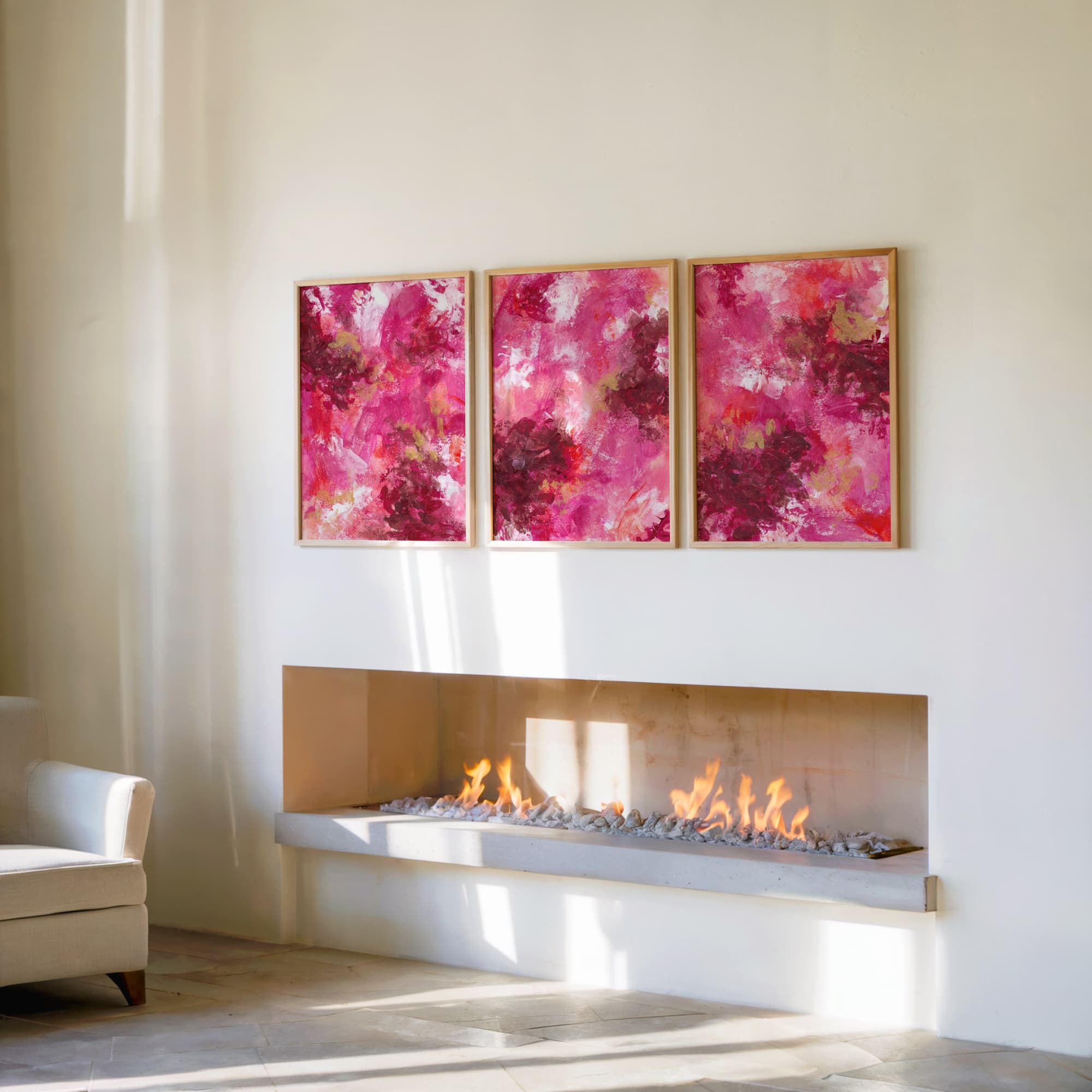
Principle 3: Private Matters More Than Public, Why Visibility Cheapens Value
One of the most insidious habits of the modern art world is its obsession with visibility. Collectors are encouraged to be seen. To host dinners. To post photographs with artists. To stage their acquisitions as proof of taste and wealth. Publicity becomes part of the acquisition. If no one knows you own it, does it even count?
But visibility comes at a cost. The moment you turn your collection into performance, you dilute its intimacy. Pieces that should be holding you privately become props in your social theatre. They are photographed, commented on, and, worst of all, reduced. The subtleties of presence cannot survive constant exposure. They become flattened into images on a feed.
Quiet collectors resist this because they understand that privacy is not absence, it’s protection. Privacy protects resonance from being consumed. It allows you to encounter a work again and again without the static of other people’s opinions. In private, you can let the work say what it needs to say. In public, the work becomes a mirror of other people’s projections.
The Vault is built with this principle in mind. It isn’t a gallery floor, where everything is designed for display. It is a private catalogue. There is no pressure to broadcast, no expectation of spectacle. You choose what comes into your life and where it lives. No one else needs to know unless you want them to.
This is not to say that public display is wrong. Galleries and museums have their role, and collectors who lend their works make important contributions. But confusing public visibility with private value leads to shallow acquisitions. You end up chasing the pieces that will impress others, not the ones that will hold you when no one else is in the room.
There’s also a deeper truth here: the more visible a piece becomes, the less it belongs to you. The moment it is widely photographed, analysed, or shared, you lose a degree of intimacy. Privacy, by contrast, intensifies belonging. When a piece is just for you, it can speak more clearly. It doesn’t have to perform.
This is why many of the world’s most discerning collectors build private rooms, studies, or entire spaces where only they encounter their works. They understand that art functions differently when freed from public expectation. In privacy, art regains its ability to hold you rather than hold an audience.
The quiet collector makes peace with invisibility. They don’t need their collection to boost their status. They need it to deepen their life. Privacy, in this sense, is not withdrawal but refinement. It is choosing to keep what matters most away from the noise so it can retain its full power.
Buying art that holds you means valuing private resonance over public applause. It means letting pieces live with you, not for you. The Vault provides that opportunity: private, intentional, unseen until you decide otherwise.
Because ultimately, privacy is not about secrecy. It’s about sovereignty. It’s about deciding that your relationship with the work is too important to dilute. And in a culture addicted to visibility, that decision is the ultimate act of discernment.
Principle 4: Stillness as the New Commodity, Investing in What the World Can’t Mass Produce
Every generation has its prized commodities. Once it was land. Then gold. Then oil. More recently, it has been data, harvested, traded, and sold. But look closely and you’ll see that the most valuable commodity of our time is something harder to monetise: stillness.
In a world engineered for distraction, stillness is scarce. Notifications chase you across devices. News cycles refresh every hour. Even leisure has been gamified into performance, photographed and uploaded before it’s lived. The rarest luxury today isn’t speed or novelty. It’s the ability to breathe without interruption.
Art has always had a role in providing this, but not all art succeeds. Decorative work can be pleasing, but it rarely stills you. What holds you is art that creates a shift in the body, a drop in your shoulders, a pause in your breath, a sudden sense of being anchored rather than scattered. That is stillness made physical.
Quiet collectors know this. They understand that the true value of a piece lies not in how it looks under gallery lights but in how it recalibrates them at the end of a long day. Stillness isn’t fashionable. It isn’t shareable. But it’s indispensable.
The Vault exists to protect this commodity. It isn’t filled with crowd-pleasers designed for a feed. It holds works created from presence, works that resist performance. These pieces are not designed to impress the outside world but to sustain the inner one. Their currency is resonance, not recognition.
Why call stillness a commodity at all? Because its scarcity drives its value. The noisier the world becomes, the more people crave what cannot be digitised or reproduced. You can manufacture another gadget, another post, another advertisement. You cannot manufacture genuine presence. That makes stillness one of the most enduring investments you can make.
And unlike other commodities, stillness appreciates in personal value. The longer a piece lives with you, the more its stillness seeps into your life. A decade in, you don’t just see the work, you feel its frequency shaping your daily rhythm. That kind of return is impossible to replicate in markets.
For the quiet collector, acquiring art that anchors stillness is not indulgence but foresight. It is recognising that in twenty years, when noise has doubled again, what will matter most are the sanctuaries you’ve built into your environment. Rooms that let you breathe. Walls that hold you rather than demand from you.
This is why stillness is the new commodity. It’s the one thing money alone can’t mass-produce but discerning collectors can consciously acquire. The Vault offers a framework for exactly that, a catalogue of works that function less as decoration and more as stillness engines, grounding you every time you encounter them.
To invest in stillness is to invest in your own clarity. It’s to ensure that your environment nourishes rather than depletes. And in a century obsessed with speed, the collector who chooses stillness is already ahead.

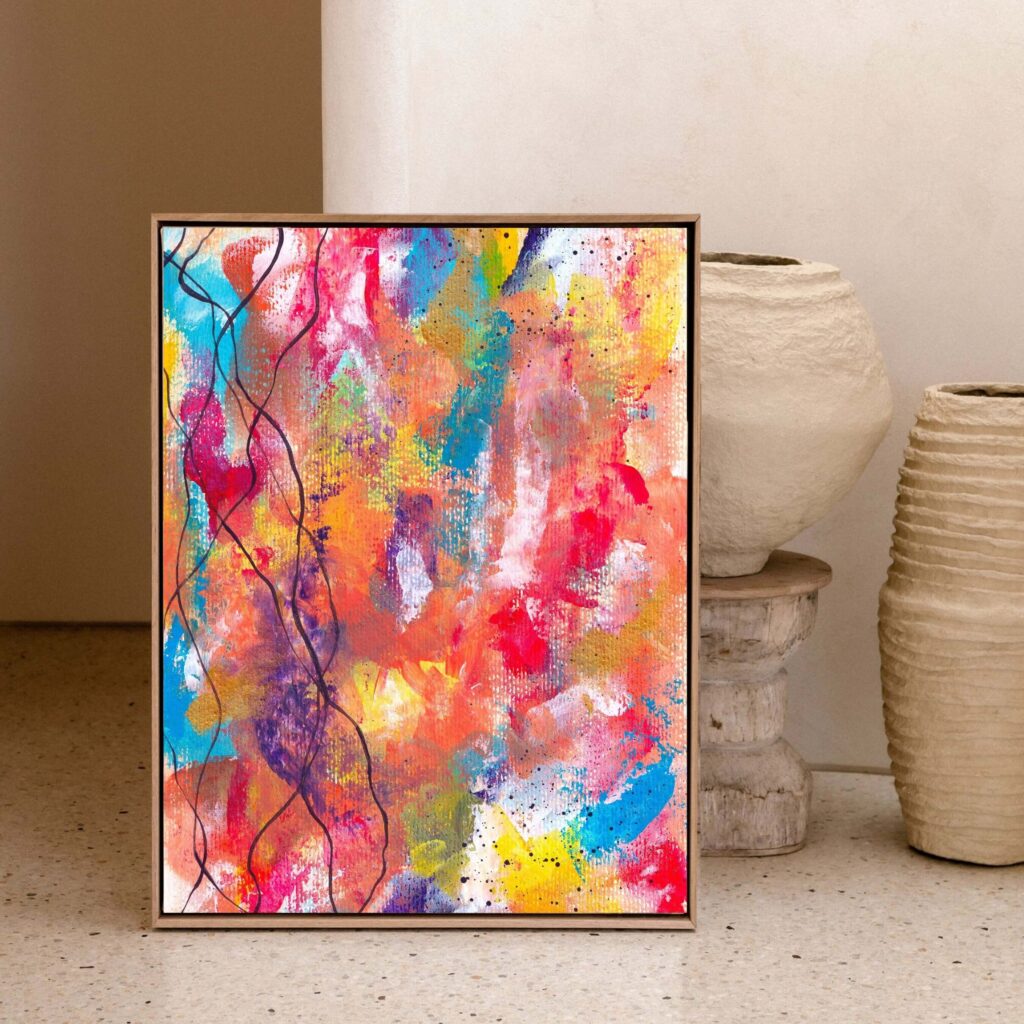
Principle 5: Emotional Intelligence in Art, Choosing Reflection Over Decoration
The easiest way to misunderstand art is to treat it as decoration. Something that fills a gap, matches a fabric, softens a space. That mindset reduces art to wallpaper, and wallpaper rarely changes lives. The quiet collector knows better. They know that the best works do more than decorate a room; they reflect the person standing in front of them.
This is where emotional intelligence enters collecting. Emotional intelligence in art isn’t about whether a work looks “happy” or “sad.” It’s about whether the work acknowledges complexity. Whether it allows you to feel more of yourself, not less.
Decorative art flattens. It smooths edges, avoids challenge, and demands nothing from you. Emotionally intelligent art expands. It says: here is chaos alongside calm, here is light threaded through shadow, here is the imperfection that makes you human. And in that reflection, you feel recognised.
Collectors who buy only for surface aesthetics often end up restless. They tire of pieces as quickly as they change their interiors. But when you buy for emotional intelligence, the opposite happens. The longer the piece stays with you, the more it reveals. It becomes a conversation rather than an accessory.
The Vault is curated for this kind of collecting. Every work is created to hold emotional frequency, not just visual appeal. The colour fields, the textures, the interplay between boldness and restraint, each piece contains contradictions, because life contains contradictions. And that’s what makes them resonate over decades instead of seasons.
This is also why emotionally intelligent art cannot be chosen solely by committee. Algorithms may suggest what matches your palette, but they cannot know what will meet you in your truth. That’s something only you can feel. It requires you to pay attention to your body’s response. Do you feel steadier? Do you feel seen? Do you feel like you’ve entered into dialogue with the work, rather than standing outside of it?
Quiet collectors trust those signals. They don’t worry if a piece confuses others or defies easy description. They understand that recognition from the outside world is irrelevant if the work creates recognition within.
Buying art that holds you means buying pieces that listen back. Pieces that act as mirrors, not masks. This requires courage, to admit you want more than a perfect surface, to admit you need reflection rather than decoration. But that courage produces collections that endure, because they are built on truth, not trend.
Emotional intelligence in art doesn’t mean every piece makes you comfortable. Sometimes it’s the opposite. Sometimes the most resonant works are the ones that sit in your discomfort and refuse to let you turn away. That too is holding. That too is presence.
Decoration can be copied endlessly. Emotional resonance cannot. The quiet collector knows which one is worth choosing. And the Vault exists precisely for that, to place in your hands work that doesn’t just hang in your space but engages with your life, holding it in all its complexity.
Principle 6: Placement as Power, How a Room Changes When the Right Work Enters
Collectors often think acquisition ends at purchase. The piece is chosen, paid for, framed, and delivered. Job done. But any quiet collector knows the real transformation happens after that, when placement decides whether the work will merely exist in your home or actively change it.
Placement is power. It determines whether art becomes a background prop or a living presence. Hang a piece in the wrong spot and it’s reduced to furniture. Place it with intention, and the entire energy of the room shifts. The difference is not subtle. You feel it the moment you enter.
Think about it: where do you spend your most significant time? Not just where guests will see you, but where you live, your study, your private retreat, the corner of a living room where you sit in silence after a long day. These are the places that deserve resonance. Collectors who buy only for show end up displaying work where others will admire it. Quiet collectors place work where they will be held by it.
The Vault exists with this awareness built in. These aren’t pieces that simply look good in neutral interiors. They are works that recalibrate space. A dining room can become more intimate. An office can become more decisive. A bedroom can become more restorative. The placement isn’t an afterthought. It’s the final stage of alignment.
Placement also extends beyond walls. Lighting matters. Scale matters. Even the relationship between one piece and another changes resonance. Too many collectors crowd their rooms with acquisitions until nothing breathes. The quiet collector resists this urge. They give space as generously as they give support. They let a single piece command a wall if that’s what it needs. They accept that restraint is sometimes more powerful than excess.
What’s overlooked in conversations about placement is how it shapes behaviour. A well-placed piece doesn’t just change a room; it changes you. It slows your movement, anchors your thoughts, redirects your attention. Over time, that influence becomes part of your rhythm. The placement becomes a form of architecture, invisible to visitors perhaps, but undeniable to you.
Buying art that holds you means taking responsibility for where it lives. Placement is not decoration. It is a form of curation that determines whether resonance flourishes or withers. The Vault encourages you to think in these terms. It isn’t about filling gaps. It’s about activating presence.
The quiet collector understands that acquisition without placement is incomplete. The true power of collecting lies in how a piece enters your daily orbit. Done right, a single work in the right place can alter the frequency of your entire home. Done poorly, even the most extraordinary piece is silenced.
Placement is not a logistical detail. It’s the final act of respect.
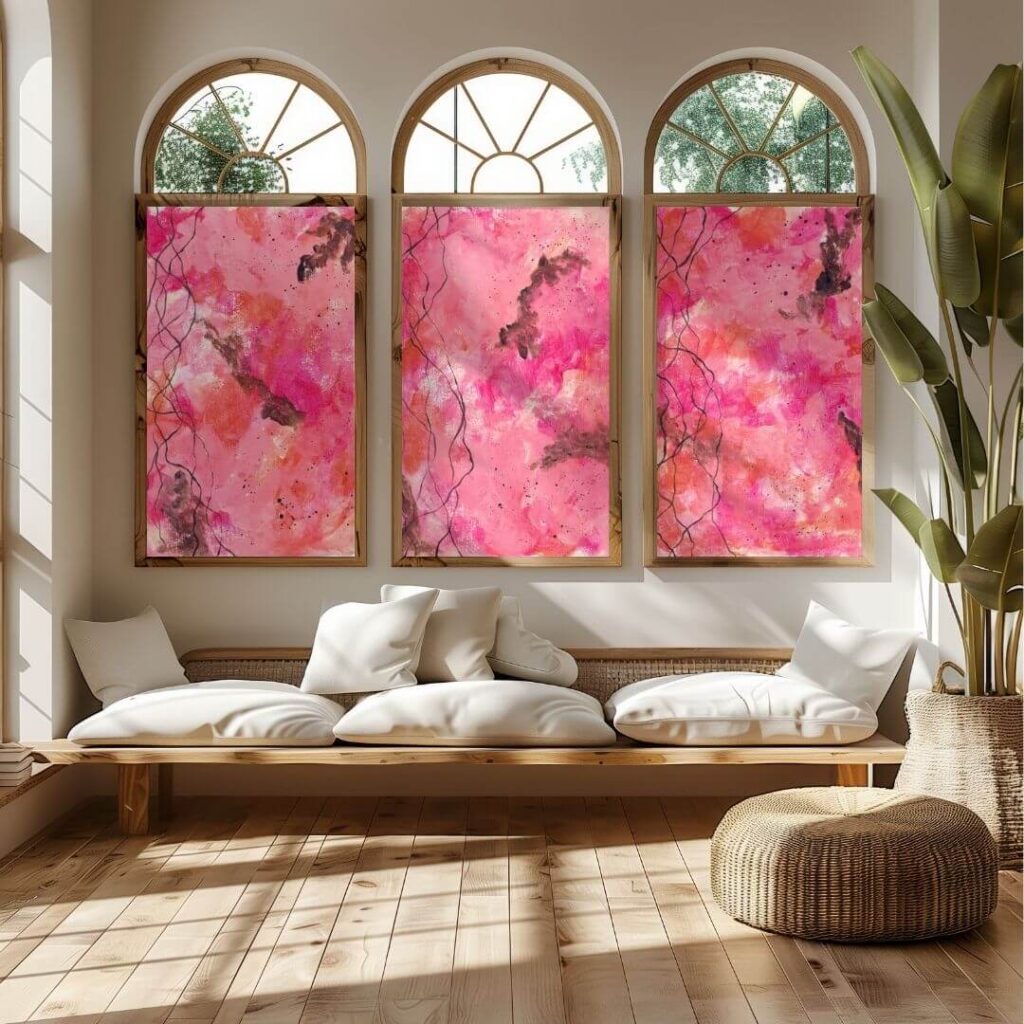

Principle 7: Beyond the Pitch, Why the Quiet Collector Refuses Persuasion
If you’ve ever been cornered at an opening, you’ll know the pitch when it starts. The dealer leans in, their voice drops, and suddenly you’re being told why this work is the one. Scarcity. Investment value. The nod to a name you should know. It’s theatre, not conversation.
The truth? Persuasion is a distraction. If a piece really holds you, you don’t need anyone telling you why. You already know. The quiet collector trusts that instinct. They don’t need to be convinced because they aren’t buying a pitch, they’re buying presence.
That’s why persuasion feels cheap in this context. It reduces something as intimate as collecting to a transaction. You’re no longer in dialogue with the work; you’re fending off someone else’s urgency. And urgency is the enemy of resonance.
The Vault is built to avoid all of this. No hover-sales, no engineered scarcity tactics, no scripted monologues about “market relevance.” You open the catalogue. You sit with it. You notice what changes in you as you look. If nothing moves, you close it again. That’s the whole process.
Quiet collectors prefer it that way. They don’t want to be managed into a decision. They don’t want jargon about value curves. They want to see if a work does what it’s supposed to do: hold them. If it does, the decision is easy. If it doesn’t, no pitch in the world will make it right.
Here’s the difference: persuasion tries to speed you up. Resonance slows you down. And slowing down is the only way you know a piece will last with you. That’s why quiet collectors refuse persuasion. It’s not rebellion. It’s discernment.
Principle 8: Anchors, Not Accessories, How True Art Grounds You
Accessories are easy. They can be swapped out each season, coordinated with whatever colour scheme is trending, and discarded without much thought. That’s why interior magazines love them, they keep the cycle going. But accessories don’t hold you. They don’t carry weight.
Anchors are different. Anchors are what stop you from drifting when everything else is pulling you in different directions. They are what you return to when the noise is too loud or the pressure is too high. Quiet collectors know that the only art worth owning is the kind that anchors you.
When you treat art as an accessory, you’re asking it to play the role of background. You want it to sit neatly on the wall, behave, and not ask too many questions. But when you treat art as an anchor, you’re asking it to play the role of presence. You want it to steady you, hold you, and remind you of something larger than the surface of your day.
The Vault was never designed for accessories. It’s not about matching cushions or filling gaps. These are pieces created with gravity. They pull you back to centre when you’ve been scattered. They are not temporary embellishments; they are structural.
Think about the difference in practice. An accessory gets moved when the sofa changes. An anchor gets moved when you change. Accessories are bought to keep up with others. Anchors are bought because you know you can’t keep going without them.
This is why quiet collectors talk less about “what they own” and more about “what holds them.” They understand that the worth of their collection isn’t measured by quantity but by how many anchors they’ve placed in their lives.
Accessories are nice, but they’re forgettable. Anchors are irreplaceable. And in a world built on distraction, the anchor has become the rarest, most necessary role that art can play.
The quiet collector doesn’t just hang a piece. They rely on it. And that reliance is what separates collecting for noise from collecting for depth.
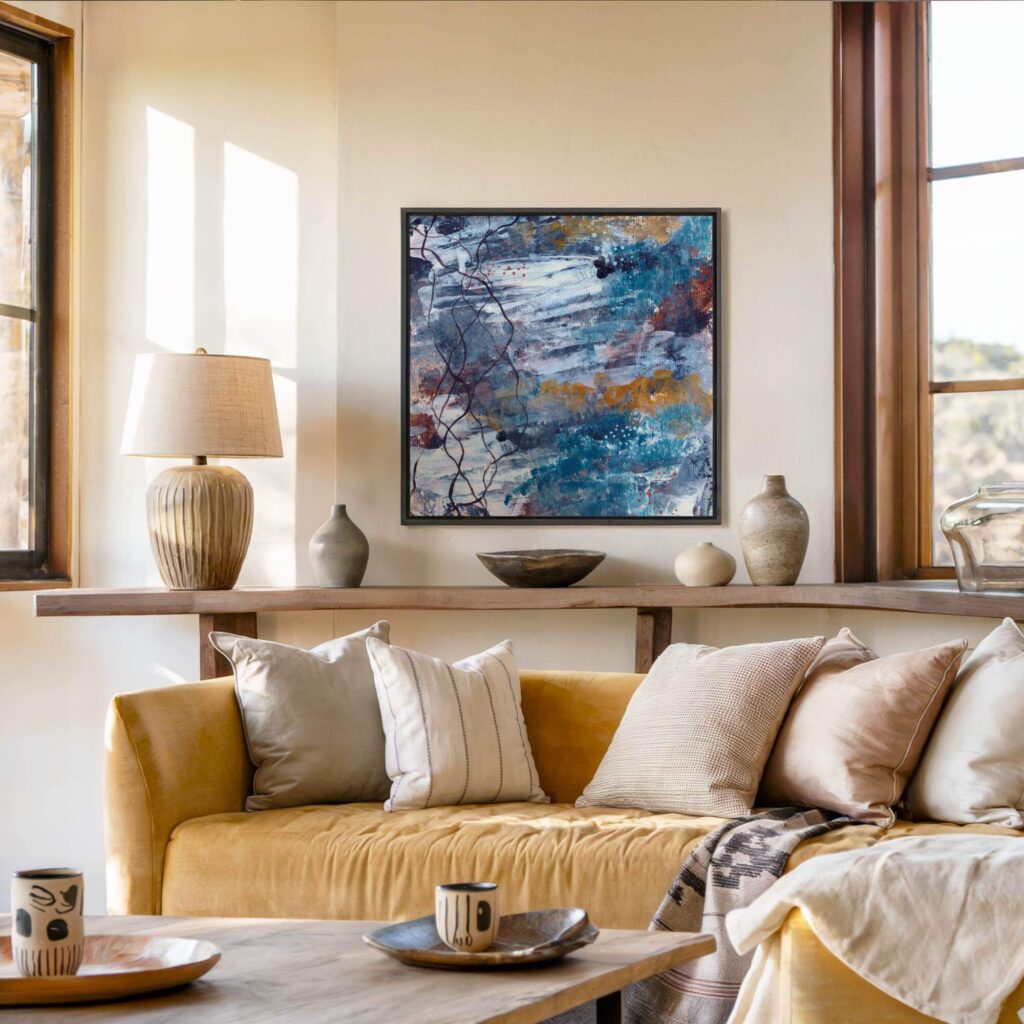
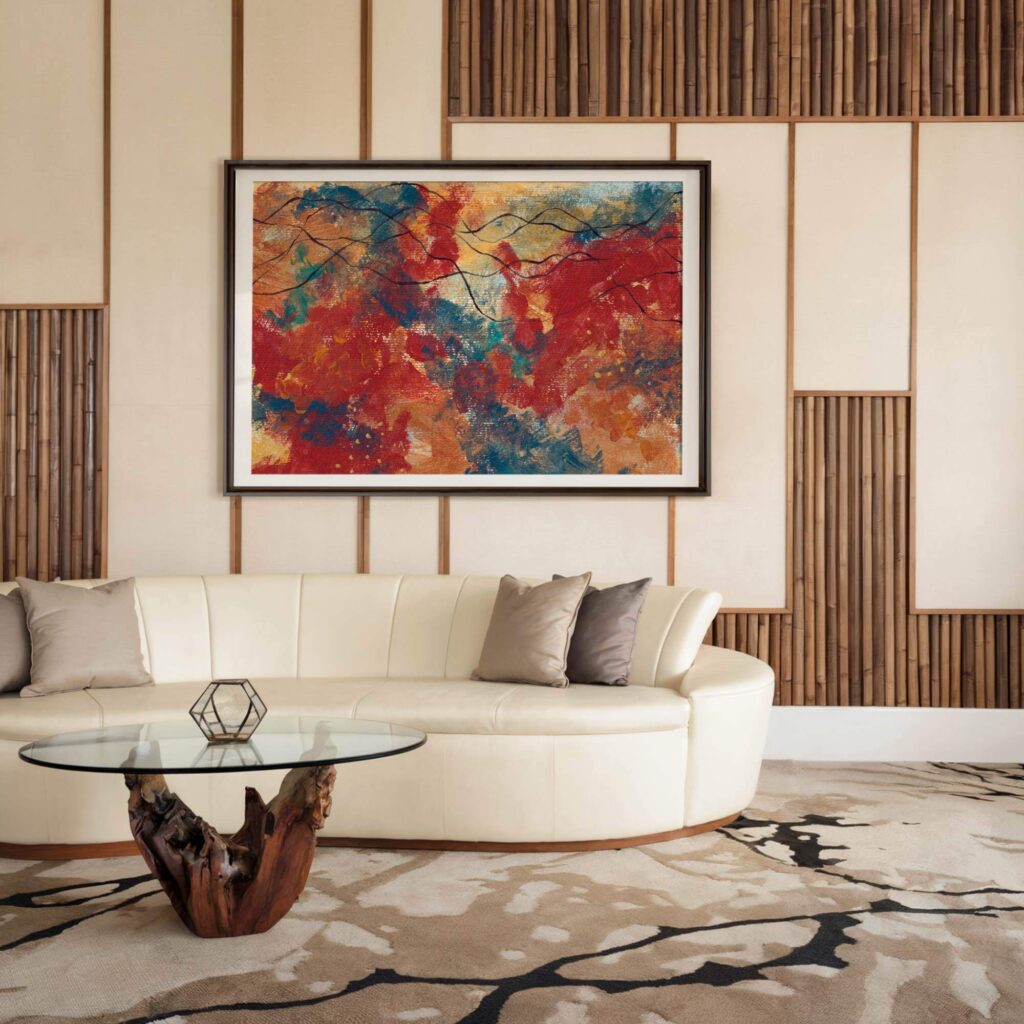
My Offerings
Whether you’re a private collector, a wellness-focused brand, or a designer sourcing for a high-calibre project, I offer art that resonates deeply and subtly.
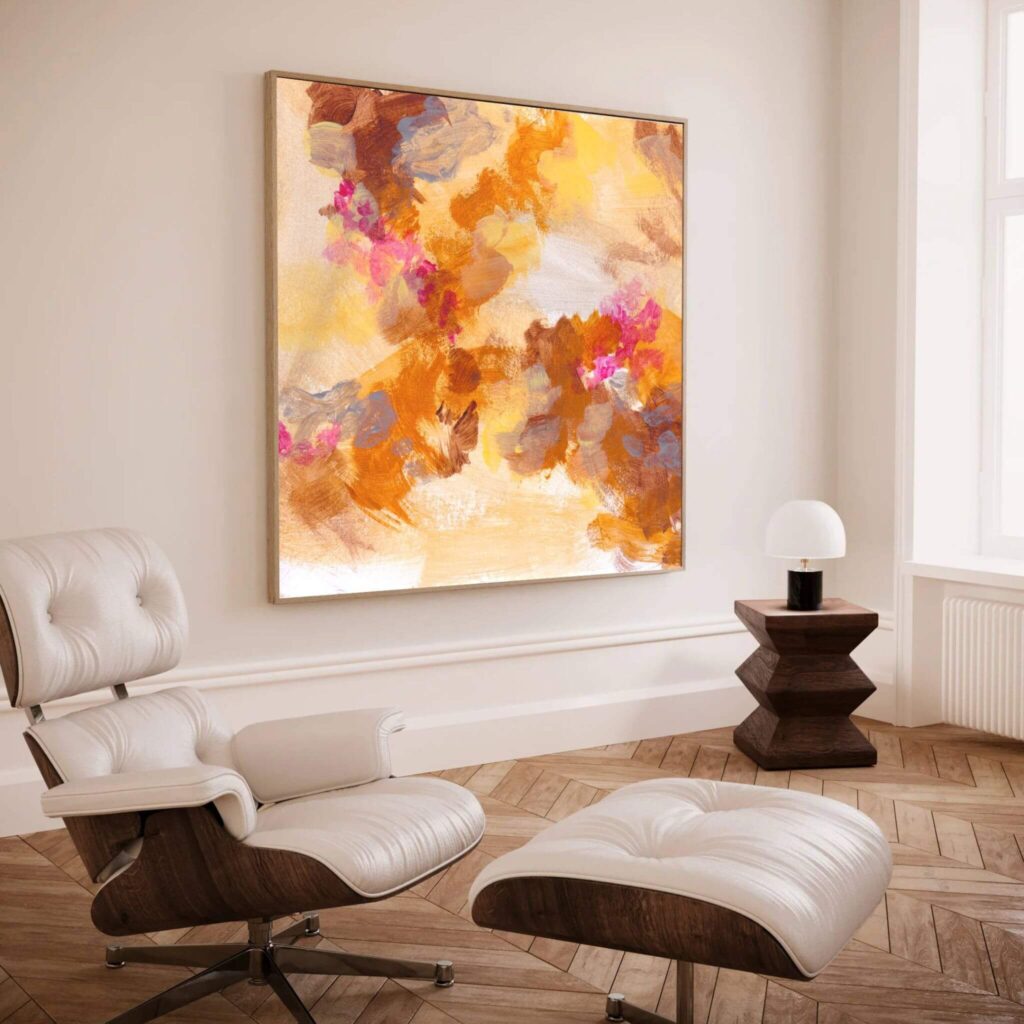
Collector's Vault
Canvas prints from the archive, made with emotional resonance and sustainable materials for spaces seeking depth.
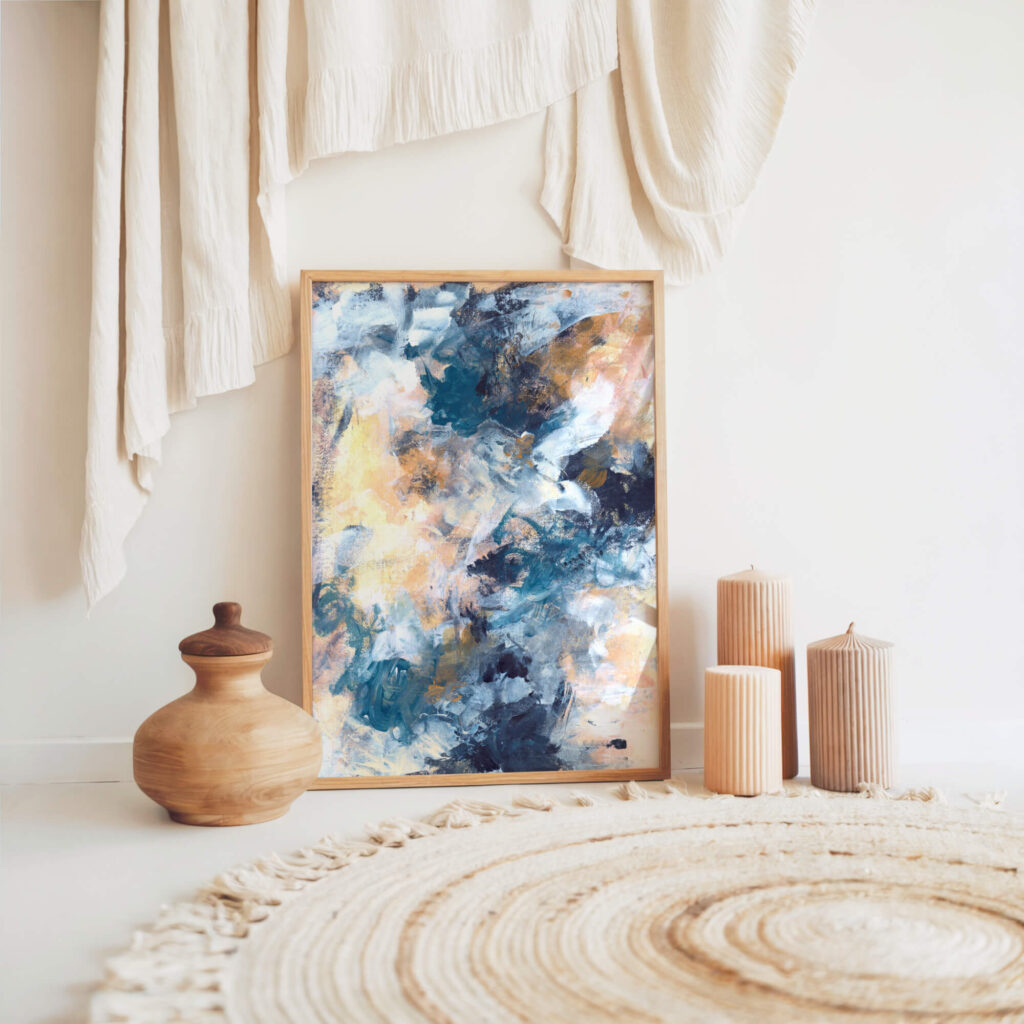
Capsule Commission
Created privately, one at a time, through stillness and reflection. Limited spaces each season to preserve depth and intimacy.
The Last 10
Ultra-limited, hand-embellished editions. No more than ten will ever exist. Made to ground, steady, and hold presence at the highest tier.
Principle 9: Provenance Without Parade, Privacy in Acquisition
The art world can’t help itself when it comes to parade. Auctions run like theatre, prices shouted out and published in headlines the next morning as if they were sports scores. Dealers drop names because they know names sell. Even collectors get caught in it — telling stories of who they bought from, who else was in the room, which celebrity once owned the piece.
But provenance isn’t supposed to be gossip. It’s supposed to be history. The honest trail of where a piece has been, not a PR stunt. For the quiet collector, this distinction matters. They don’t care if a painting once sat in a billionaire’s penthouse. They care whether the line of ownership is clean, whether the piece has lived without being endlessly flipped, whether it still carries the weight of its making rather than the noise of its market.
This is why the Vault works differently. There is no performance. No bidding war, no “record-breaking sale,” no inflated number to make the press release sound good. You aren’t buying against a crowd. You’re choosing privately. That choice means the provenance stays clear — not tangled in spectacle, not diluted by someone else’s ego.
And here’s the truth: the more public the provenance, the less personal the piece feels. The moment it’s turned into trivia – “this once belonged to X” – your relationship with it is filtered through other people’s stories. Privacy keeps the relationship intact. When no one else knows you own it, the work speaks only to you.
Quiet collectors value that. They don’t need the dinner-party anecdote. They don’t need the plaque. They need the work to live in their space without commentary. Provenance without parade isn’t secrecy — it’s sovereignty. It’s the freedom to collect without having to perform your choices.
That’s the kind of provenance that holds.
Principle 10: Collect for Holding, Not Impressing, The Ultimate Principle of the Vault
Most collections collapse under the weight of performance. Pieces are bought to impress guests, to look good in magazines, to prove taste. The walls end up carrying other people’s opinions, not the collector’s truth. It’s exhausting.
The quiet collector doesn’t play that game. They collect for one reason only: to be held. Not to impress, not to tick boxes, not to prove they’re part of the “scene.” If the work doesn’t hold them, it doesn’t come in. Simple.
Collecting this way strips out a lot of noise. It forces honesty. You can’t hide behind market logic or trends. You have to admit when something moves you — and admit when it doesn’t. That honesty is where the real value lies. A collection built this way doesn’t need explaining. It doesn’t need defending. It stands because it holds.
The Vault is designed for this principle. It isn’t a public shop front screaming for attention. It’s a private catalogue you step into quietly, letting each piece either take hold of you or not. No one is watching. No one is pushing. You get to choose based on presence alone.
And here’s the irony: the collections built without trying to impress are often the ones that end up impressing the most. Not because they were designed for spectacle, but because they carry integrity. You can feel the difference.
Collecting for holding is harder. It takes restraint, patience, and self-awareness. But it’s the only way to build a collection that lasts. Everything else is furniture.
Conclusion: The Quiet Collector’s Path
The loud collector chases headlines, trends, and applause. Their walls fill quickly but empty just as fast, because nothing holds.
The quiet collector builds differently. They choose resonance over recognition. Continuity over convenience. Privacy over performance. They know placement matters, persuasion doesn’t, and that art is an anchor, not an accessory. They value provenance without parade. And above all, they collect for holding, not for impressing.
That is what the Vault exists for. Not to shout, not to sell, not to perform. To give you a private, intelligent way to acquire work that steadies you. Work that holds you when the noise outside doesn’t stop.
If that’s the kind of collecting you recognise yourself in, the Vault is open. Quietly. Privately. For those who know the difference.
